Let's get the snakes out of the way first. Andasibe wasn't very snake-y compared with the other places we visited. We saw a couple of Liopholidophis lateralis race off into the bushes but didn't get any photos. The only other snakes we saw were a pair of Sanzinia madagascariensis. The first night we saw this very young and extremely red one crawling down the paved road:
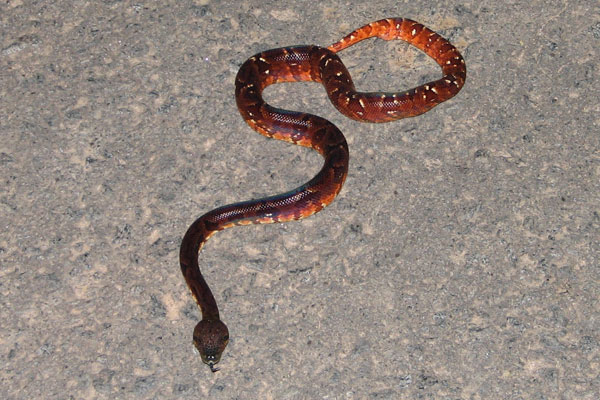
The second day our guide found this large and lethargic one on the verge of shedding its skin, coiled up in a drainage ditch along one of the trails in the park:
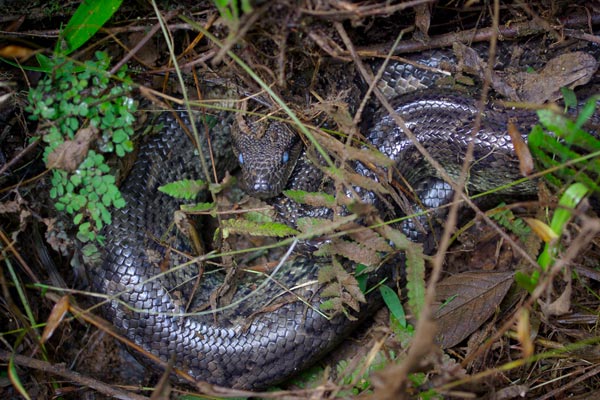
Madagascar is the land o' lizards, and in this it did not disappoint. The first lizard we saw is a widespread and very common species, the girdled lizard Zonosaurus madagascariensis. This one greeted us on the deck of the Vakona Forest Lodge while we waited to toss our luggage into the rooms that weren't quite ready yet. They are "civilization followers" and were all over the place at this lodge and in many other places we visited. They basically look like huge skinks.
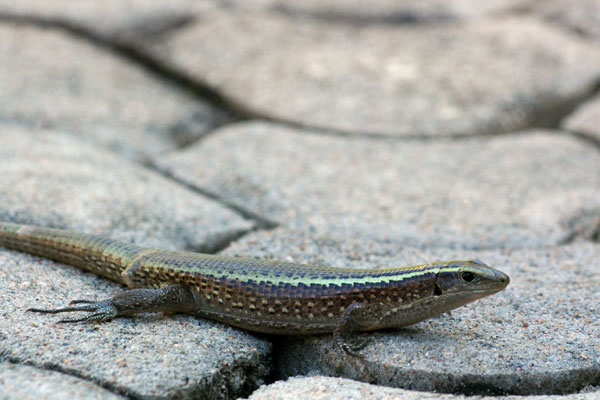
The other very prominent saurian residents of the grounds of the lodge were our first day geckos of the trip. We saw two species here. First, the really common ones, occupants of nearly every tree, wall, and fence in the area:
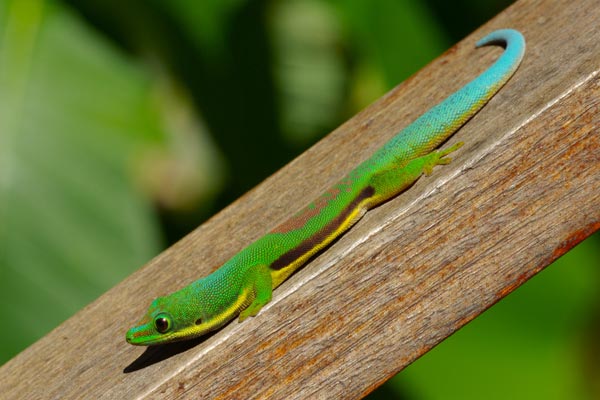
There were also a much smaller number of this much shyer species:
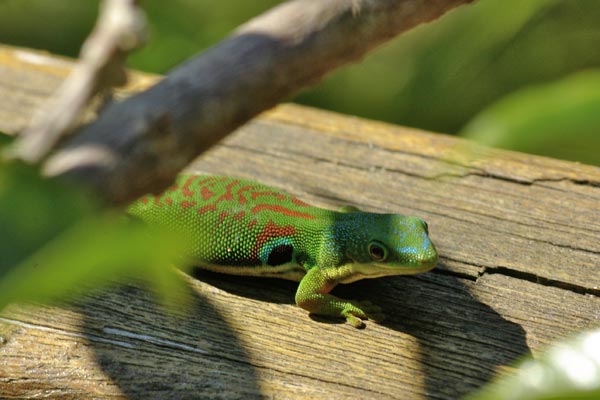
Here's a little dwarf gecko that was our consolation prize for an unsuccessful search for Brookesia chameleons. I'm not overly confident of the species ID.
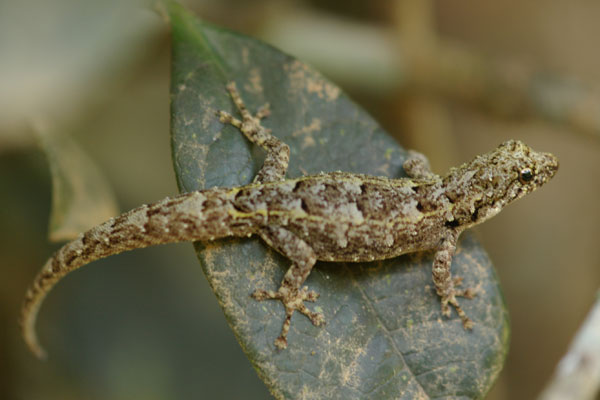
The gecko highlight of this area was a very fine Uroplatus sikorae found by day in its typical pose clinging flatly against a small tree trunk. Before I could set up my camera, it got a little disturbed and jumped from its initial pose, catching itself with one leg and its chin (!) by a twig. It stayed in this bizarre pose perfectly still for at least ten minutes while we admired and photographed it:
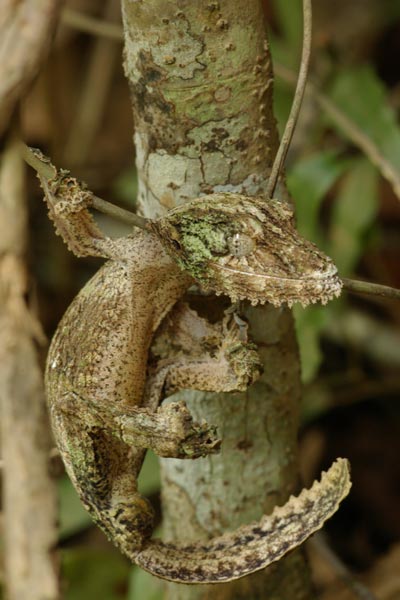
Eventually I gently prodded it out of this uncomfortable-looking position and it grabbed the trunk and moved back into a more typical you-can't-see-me-I'm-just-part-of-this-tree stance:
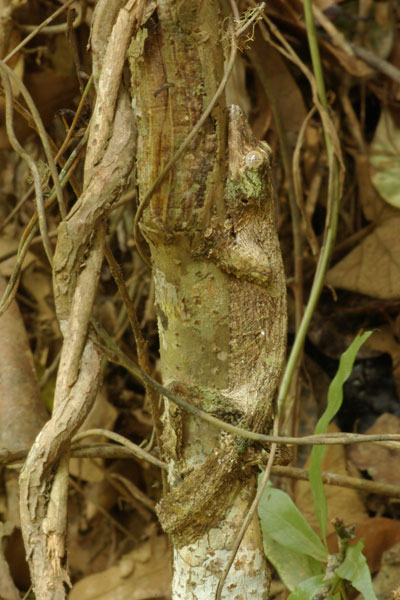
Time for some chameleons. Here are the five species we saw in and near Analamazoatra, from smallest to largest. Our guide claimed that these were the only five standard chameleon species in the park. This doesn't count the little Brookesia leaf chameleons, which as I mentioned earlier we failed to find in this area.
Calumma nasuta is the smallest of the standard chameleons. Here's one by day:
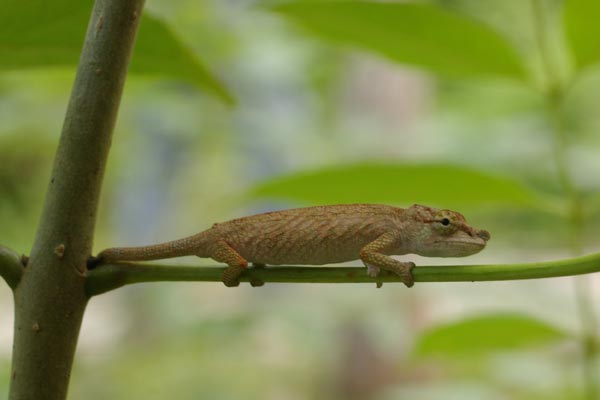
And one sleeping on a leaf by night:
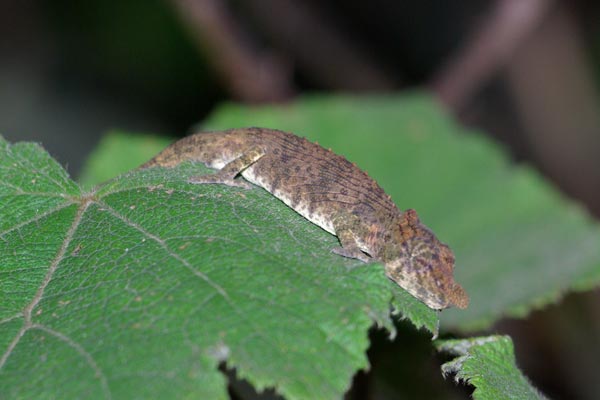
Calumma gastrotaenia is slightly larger and not quite as silly-looking as C. nasuta. Here's one on the prowl:
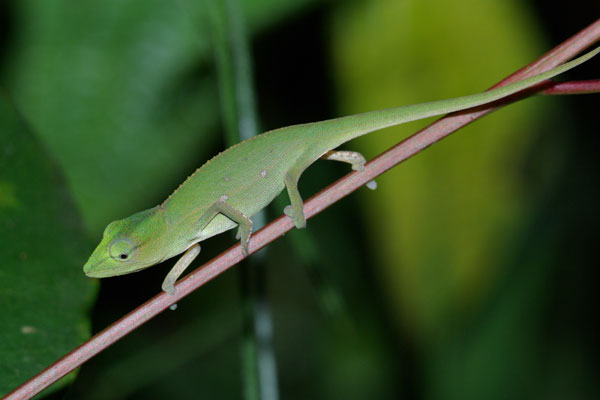
And one napping the night away:

The rarest of the five species we saw was Furcifer willsii. Late in our second afternoon, as dusk was beginning to fall, we found this little tyke. This guy was not happy about posing for photos.
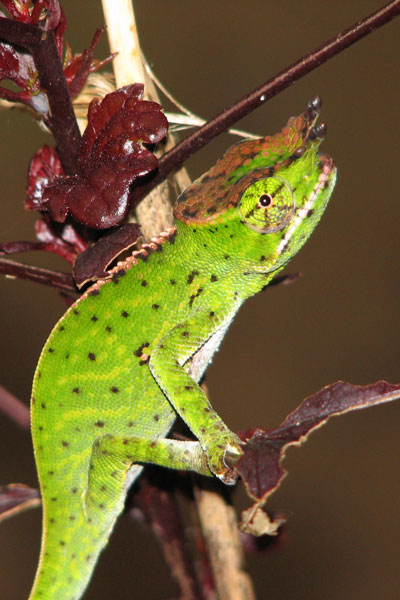
The most common of the five species was Calumma brevicornis. We saw at least a dozen of these in our two days, in a wide assortment of colors and patterns. This youngster was our first chameleon of the trip:
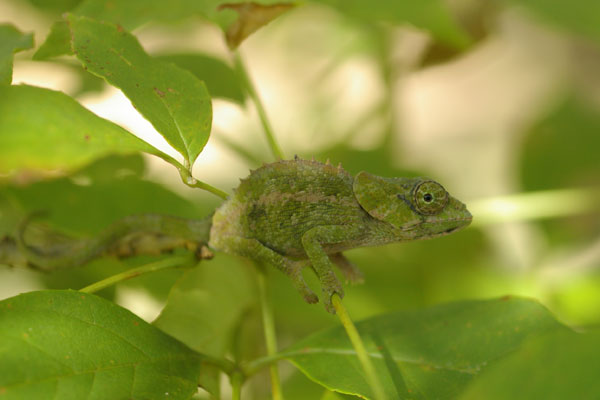
And here's an adult male. Many of the male Calumma chameleons have silly noses.
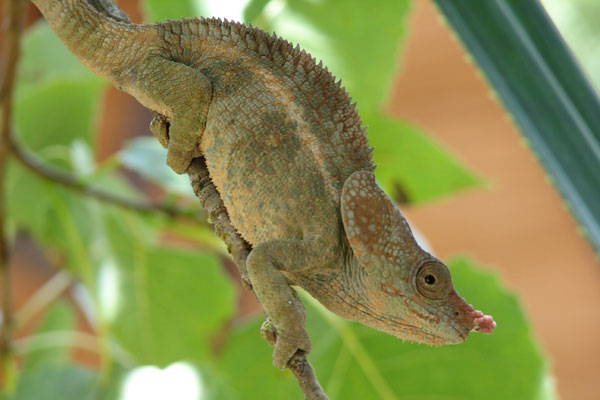
Finally, we came across a pair of Calumma parsonii, either the largest or the second-largest chameleon species, depending on how you measure or whom you believe. Here's a large adult female:

And here's a medium-sized male, chomping on a grasshopper:
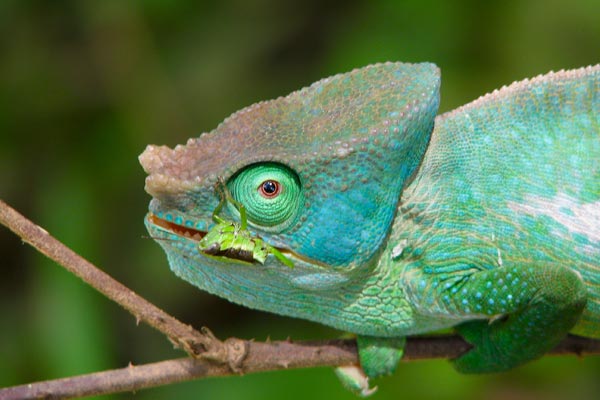
On to the frogs! There are several related species of frogs that spend essentially their entire lives in Pandanus plants. As dusk approached, it was easy to find lots of these little frogs in the plants scattered around the Analamazoatra Reserve's entrance area, but harder to determine which species was which. (I believe all of these frogs have been reclassified into the genus Guibemantis recently, but I'm sticking with the names from the 2nd edition of Glaw & Vences for now. The 3rd edition is due out in a few months, so I can rethink everything then.)
I believe the dark body and white jaggy dorsilateral bands identify this as Mantidactylus albolineatus
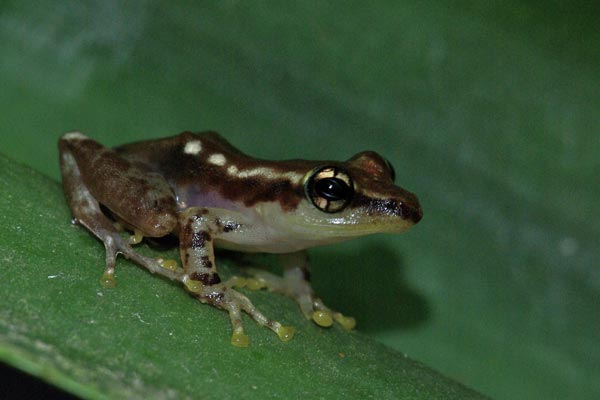
This yellow-and-brown fellow seems to fit the bill for Mantidactylus flavobrunneus
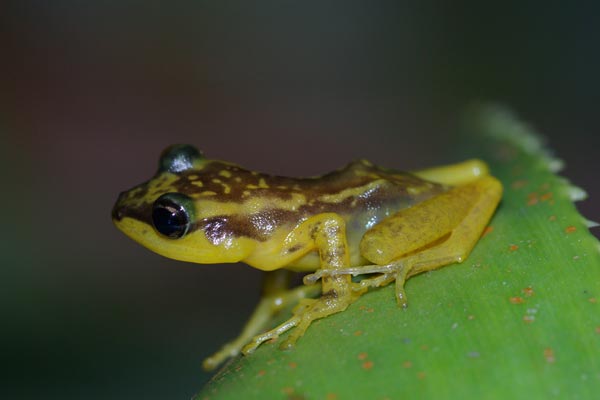
This brown-and-yellow fellow could be another M. flavobrunneus, but based on the smaller tympanum and paler colors I'm guessing that it's Mantidactylus bicalcaratus
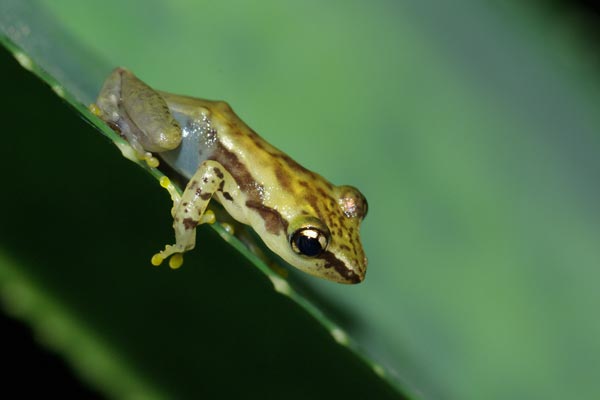
Here are a couple more Pandanus-dwelling Mantidactylus whose identities I'm even less confident about.

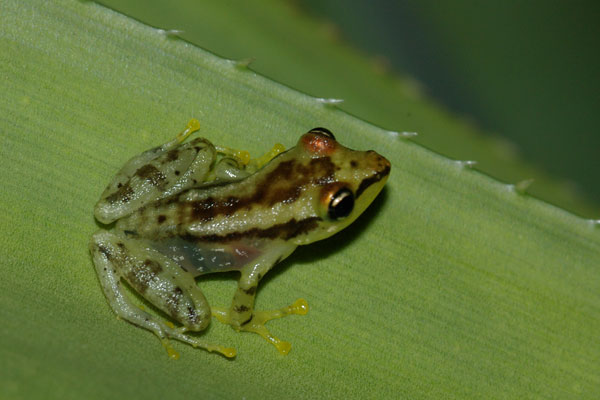
Madagascar has no true toads, but this bumpy frog is pretty toad-ish. We found this one hopping along early in the morning.
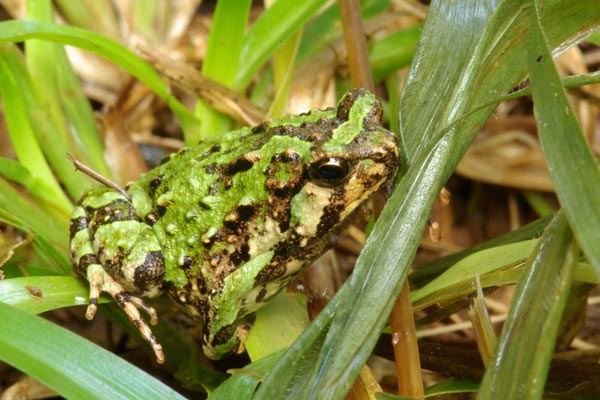
All of the other frogs we saw here were out at night, and we found them by flashlight as we walked along the road.
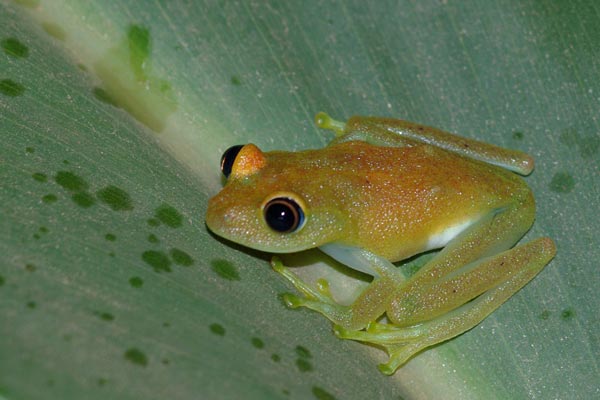
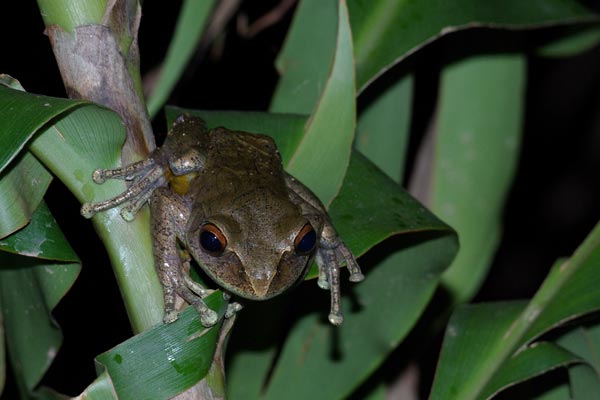
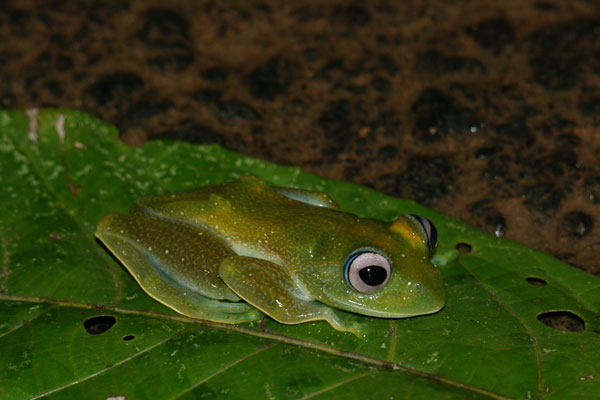
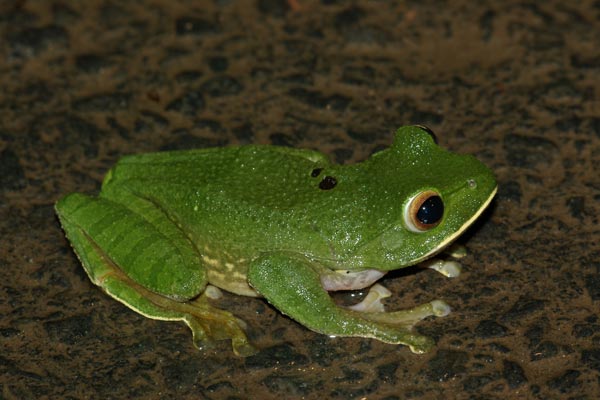
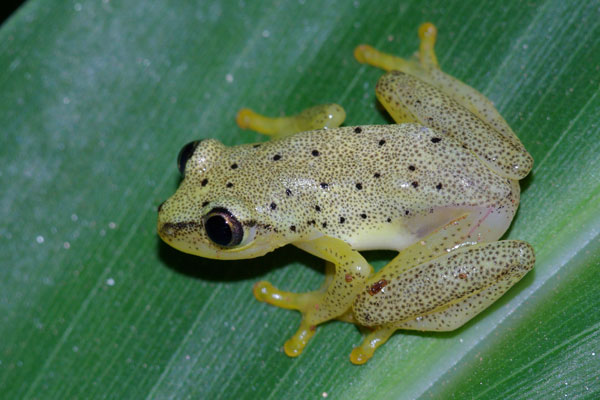
Finally, a couple of somewhat mysterious frogs. Both of these seem to be Heterixalus, but they don't seem to be H. punctatus, since the whole point of being punctatus is having 25-30 larger black spots mixed in with the tiny brown spots, as seen in the previous photo. The only other Heterixalus species listed by Glaw & Vences for the Andasibe are H. rutenbergi, which has very distinctive green, white, and brown stripes, and H. betsileo, which is described as having broad yellow dorsilateral bands. I'd love to hear some opinions by Madagascar experts out there.
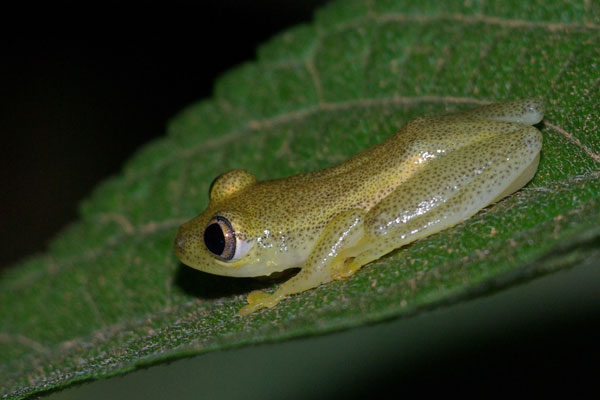
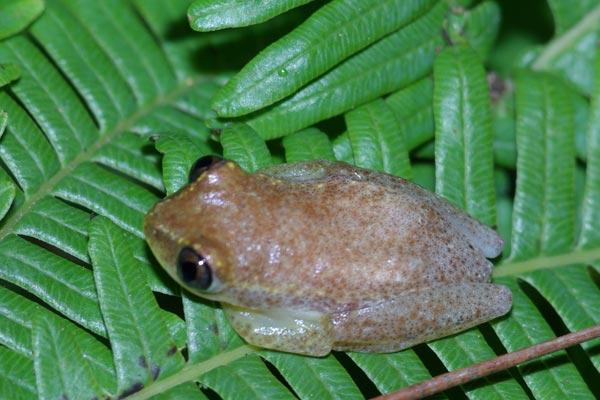
And here are some bonus photos of animals that dare to not be herps.
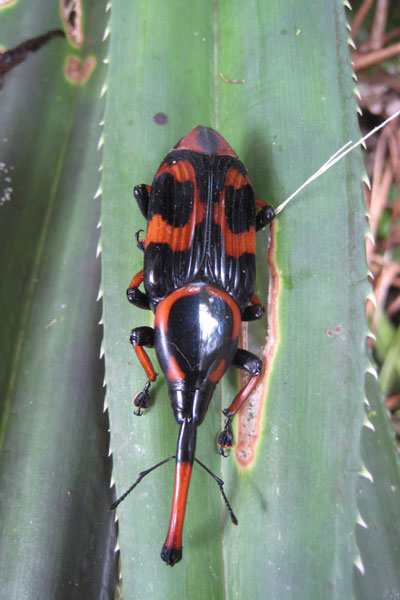
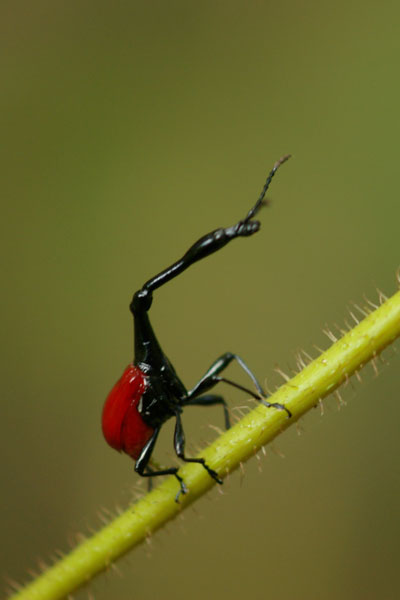
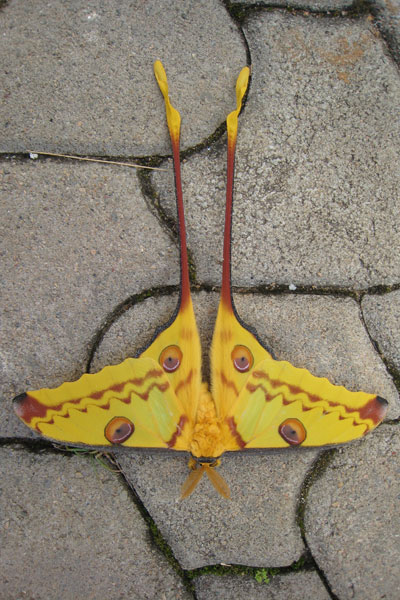
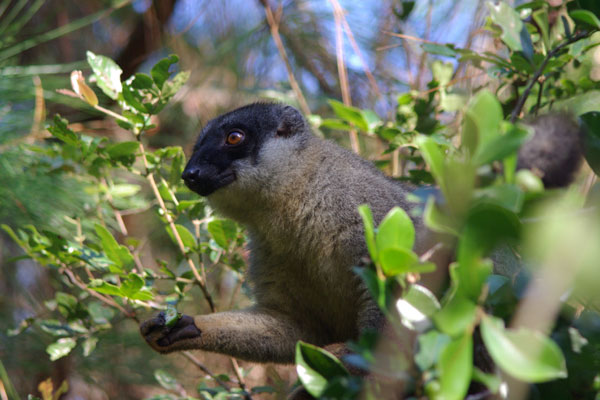

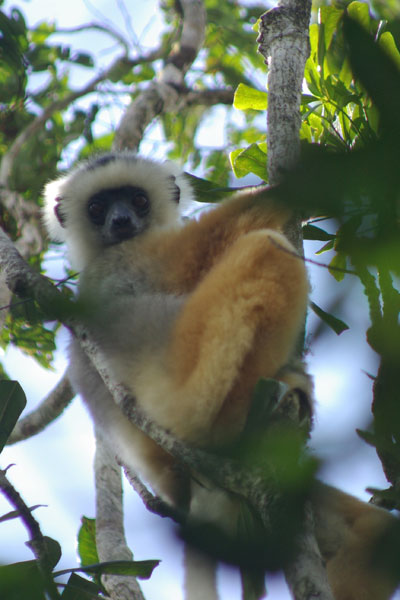
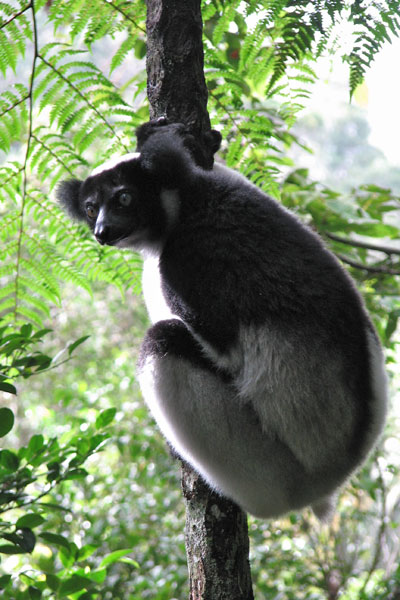
Next: Anjaha